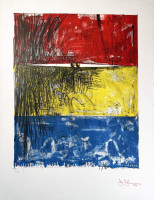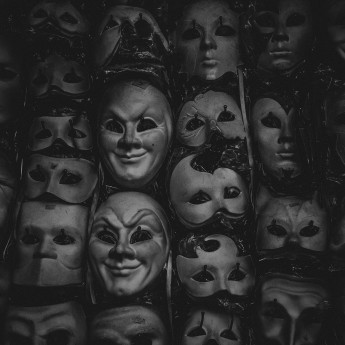
Details
Artist
Styles
Plate size: 49.8 x 31.1 cm - Work size: 65.7 X 50.1 cm - Catálogue: Schawartz 433; Ginestet & Pouillon E 672 // La Mariée (The Bride) by Marcel Duchamp, an aquatint created in 1934, exemplifies the artist's exploration of abstract and mechanistic forms. This limited edition print, measuring 65.7 x 50.1 cm, is part of Duchamp's iconic work series that investigates the intersection between human and machine. The composition features a complex arrangement of organic and geometric shapes that intertwine, creating a sense of fragmented motion and ambiguity. The subdued palette of greens, browns, and ochres enhances the mechanical and enigmatic quality of the figure. Duchamp’s work challenges traditional representations, inviting viewers to contemplate themes of desire, movement, and transformation.
La Mariée (The bride), 1934
form
Medium
Size
65.7 x 50.1 cm
- Inches
- Centimeters
Edition
Price
Details
Artist
Styles
Plate size: 49.8 x 31.1 cm - Work size: 65.7 X 50.1 cm - Catálogue: Schawartz 433; Ginestet & Pouillon E 672 // La Mariée (The Bride) by Marcel Duchamp, an aquatint created in 1934, exemplifies the artist's exploration of abstract and mechanistic forms. This limited edition print, measuring 65.7 x 50.1 cm, is part of Duchamp's iconic work series that investigates the intersection between human and machine. The composition features a complex arrangement of organic and geometric shapes that intertwine, creating a sense of fragmented motion and ambiguity. The subdued palette of greens, browns, and ochres enhances the mechanical and enigmatic quality of the figure. Duchamp’s work challenges traditional representations, inviting viewers to contemplate themes of desire, movement, and transformation.
What is Cubism?
Cubism is an art movement that aimed to depict multiple perspectives of objects or figures within a single picture. Artists Georges Braque and Pablo Picasso pioneered this style around 1907. The name Cubism emerged from their use of geometric shapes and outlines that often resembled cubes, breaking objects down into abstracted forms.











